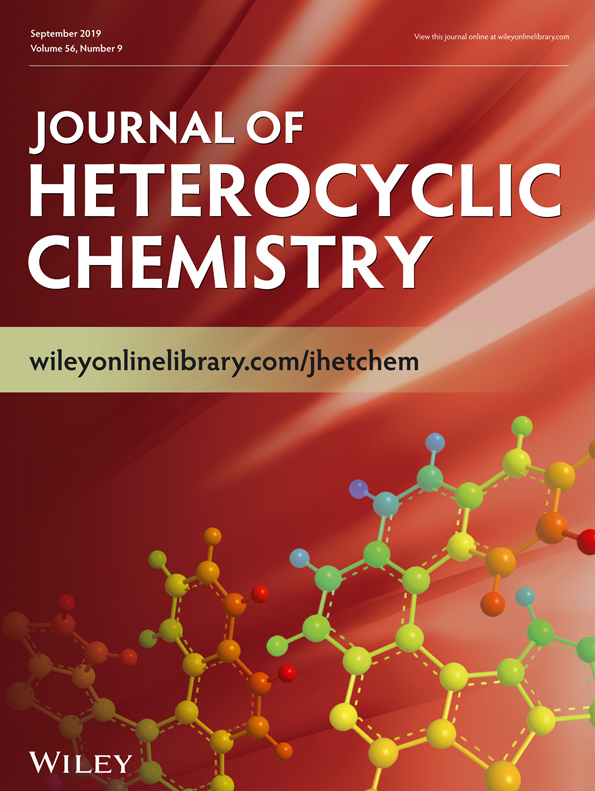Et3N-Prompted Efficient Synthesis of Anthracenyl Pyrazolines and Their Cytotoxicity Evaluation against Cancer Cell Lines
Abstract
A series of anthracenyl pyrazoline derivatives (3a–o) were synthesized with an aim to evaluate their in vitro anticancer activities. Anthracenyl pyrazoline compounds were prepared by the reaction between various anthracenyl chalcones (1a–o) and hydrazine hydrate (2). The reactions were carried out under reflux in the presence of triethylamine and ethanol for 24 h, and the obtained yields were from good to excellent (90–97%). The structure of each compound is well characterized by IR, 1H-NMR, 13C-NMR, elemental analyses, and mass spectroscopic technics, and the molecular structures of compounds 3d and 3e were solved by single-crystal X-ray crystallographic methods. The newly synthesized compounds (3a–o) were evaluated for their in vitro cytotoxic studies against four human cancer cell lines MCF-7 (breast cancer cell lines), SK-N-SH (neuroblastoma cancer cell lines), HeLa (cervical cancer cell lines), and HepG2 (liver cancer cell lines), and the screening results show strong cytotoxic effects for most of the synthesized compounds against the three cell lines except SK-N-SH cells. Notably, compounds 3a, 3j, 3l, 3m, 3n, and 3o showed a highly potential activity against HeLa cells (IC50: 0.22, 0.3, 0.3, 0.10, 0.25, and 0.25 μM), while compounds 3i, 3k, 3l, and 3m showed a significant cytotoxic activity in HepG2 cells (IC50: 0.22, 0.44, 0.40, and 0.22 μM), whereas compounds 3a, 3b, 3d, and 3e exhibit a promising cytotoxicity against MCF-7 cells (IC50: 0.73, 0.495, 0.493, and 0.66 μM).




